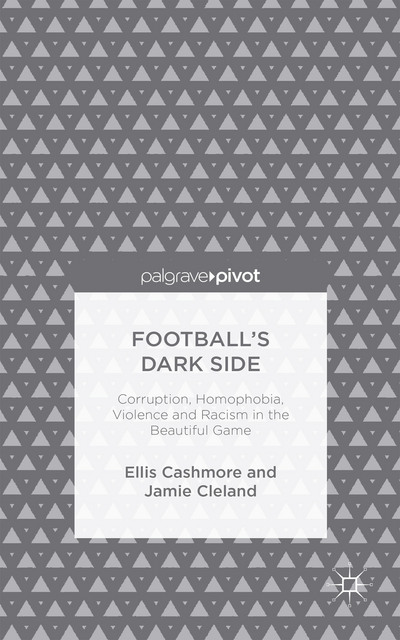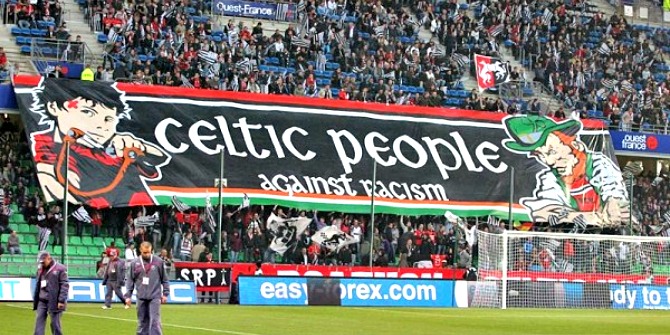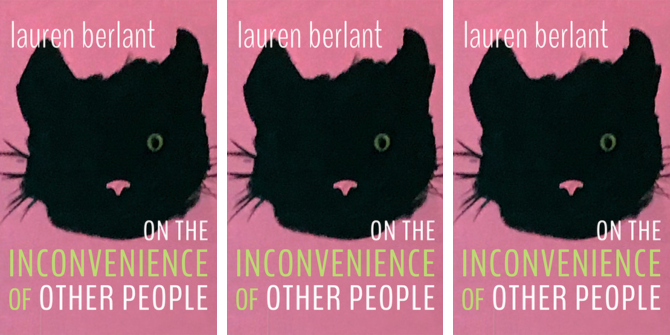In Football’s Dark Side, Ellis Cashmore and Jamie Cleland draw together the views of thousands of football fans on the game they love, but which they know has an unpleasant underside. This book offers a series of theoretical perspectives on the ‘dark side’ of football which will be of great interest to students of cultural studies and sociology, concludes Steven Harkins.

With its status as the most popular sport in the world, football is a global cultural phenomenon worthy of academic study. Increasing television revenues and global financial investment have transformed the sport and led to a process of gentrification since the 1980s. The recent racist abuse directed at Liverpool striker Mario Balotelli on Twitter served as a reminder that the sport is still associated with some seriously negative aspects. Ellis Cashmore and Jamie Cleland chose to study the aspects of football’s ‘dark side’ because ‘a thoroughgoing appraisal of the biggest, most popular and undeniably most influential sport in the world has ever seen must surely study all aspects, no matter how unpalatable they may be’ (p.89).
Since 2010 the authors of this study have developed topfan.co.uk, an online research platform which allows football supporters to ‘state their opinions, advance arguments, hazard guesses, make observations, analyse problems, propose solutions, imagine, surmise, propound, venture, submit, and just make known what they think’. The research is driven by the testimony of 10,000 football fans which is combined throughout with the authors’ expert commentary. The most interesting findings in this book are found in the often frank contributions from fans that this approach has yielded. On the subject of violence in football, a Portsmouth fan describes how:
‘Violence is an essential part of the match day experience. We go toe-to-toe with firms all over the country whenever we play. We’ve got each other’s back, we drink together and we crack skulls together. We like to drink, watch the game and fight. It’s human nature’ (p.55).
This study examines the issue of football violence through a range of theoretical positions. From a Marxist perspective football violence is interpreted as a result of the alienation of working class youth through their exclusion by the commercialisation and subsequent gentrification of the sport. The hierarchy of violence between young and old fans is also examined through ethological theory, an approach which seeks to ‘analyse humans as animals – which, after all, they are’ (p.49). Football violence is also conceptualised as ‘a public platform to demonstrate a resistance to authority and retaliate’ against rival fans and police through the figurational approach of the Leicester school (p.49). While these perspectives are interesting there does seem to be a disjuncture between the theoretical models outlined and the testimonies of the football supporters themselves.
It would have been interesting to see some space given to the classical sociological conception of ‘the crowd’, which was problematized by linking it to irrationality and de-individualization. A Newcastle United fan offers an insightful commentary on the appeal of violence:
‘With not much excitement in your life, you latch on to a tribe who then become the focus of your life and you live and breathe it. I believe it’s more to do with the poverty/boredom/mob rules, a need to release your frustration at what little seems to be going right in your life’ (p.53).

This testimony comes from the section of the chapter on violence which focuses on it as a ‘shared cultural practice’. This material gives a unique insight into the ideology of football violence sometimes from the perpetrators and provides a great example of the potential of Cashmore and Cleland’s unique research model. The research here also gives encouraging evidence that although it has not been eradicated completely, the ‘English disease’ of football hooliganism is ‘showing signs of a healthy recovery’ (p.63). A similar trajectory can be found in the chapter dealing with racism, which may not have disappeared from English football but has ‘gone undercover’ according to the authors (p.70).
Cashmore and Cleland illustrate their chapter on racism by producing a brief and compelling history of racism in football. This history begins in England and then examines racism across European football. The authors describe how:
‘It was as if racism was a liquid moving in a confined space under pressure: squeezed out of England, it spread throughout continental Europe. The metaphor is trite and simplistic, but it offers a serviceable image’ (p.71).
The narrative that develops on racism from the fan-driven research in this book is that it did not disappear but did diminish in the 1990s and even more so in the 2000s. This is partially explained through the media ignoring racism within what the authors describe as a ‘culture of complacency’ (p.74). The authors conclude that despite a reduction in the ‘overtly vicious’ racism of the 1980s there has been a ‘new type of racism’ rising in the last 14 years. Using Nietzche’s concept of ressentiment, to describe ‘a hostility that cannot be acted on’, the authors describe the ideology behind this new racism:
‘Black players symbolised that the sport had been wrenched from the grip of its fans. Of course, whites and, for that matter, other ethnic groups were also functional symbols. But black players were more readily adapted to an existing historical template’ (p.79).
The authors conclude that football’s ‘least enviable’ feature is that it has ‘been able to endure racism for so long – and without any clear sign of a resolution’ (p.80). Less room is given to the testimonies of football supporters in the chapter on racism and this is a shame because these accounts really bring this research to life.
This book offers a series of theoretical perspectives on the ‘dark side’ of football which will be of great interest to students of cultural studies and sociology. The book will also be of interest to people who follow the game beyond academia. The theoretical perspectives explored throughout the book don’t always integrate smoothly with the book’s most interesting aspect, the supporter’s testimonies. Most importantly, this research is driven throughout by a mass online survey of football supporters and this approach makes the book a unique and invaluable resource for understanding the negative aspects of football culture.
Steven Harkins is an ESRC funded PhD candidate based in the in the Journalism Studies Department at the University of Sheffield. He is also a tutor and occasional lecturer in the same department. His PhD research focuses on reporting poverty and inequality in the UK press with a particular emphasis on the relationship between journalists and their sources. He holds a BA (Hons) in Journalism and Politics from the University of Stirling and an MSc with distinction in Media and Communication research from the University of Strathclyde. Read more reviews by Steven.







